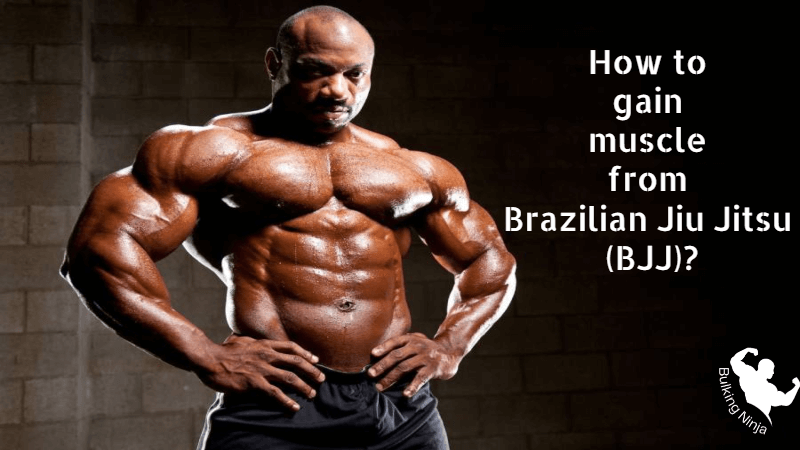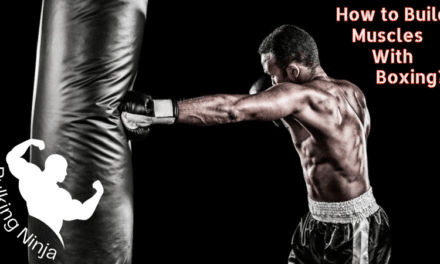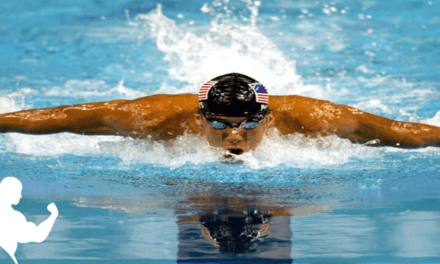Welcome to our latest blog post, where we delve into the captivating world of Brazilian Jiu-Jitsu (BJJ) and its potential to sculpt a stronger, more muscular physique. Beyond its reputation as a grappling art and self-defense discipline, BJJ offers a unique avenue for those seeking to build muscle while honing their skills on the mat.
The fusion of technique, strategy, and physicality in BJJ presents an intriguing opportunity for muscle growth that goes beyond traditional weightlifting routines. In this article, we’ll explore the art of how to gain muscle from Brazilian Jiu Jitsu BJJ, delving into the specific strategies, training approaches, and benefits that make it a dynamic addition to your fitness journey.
Whether you’re a BJJ enthusiast or someone curious about harnessing its muscle-building potential, join us as we unlock the secrets to cultivating strength and agility through the art of Brazilian Jiu-Jitsu.
Table of Contents
- How to gain muscle from Brazilian Jiu Jitsu (BJJ)?
- Does BJJ Build Muscle?
- Will BJJ Make You Stronger?
- Is BJJ Good For Building Muscle?
- What are the Health Benefits of BJJ?
- Frequently Asked Question
- Can you lift and do BJJ?
- Can you bulk with BJJ?
- Does gym help BJJ?
- What muscles do you strengthen for BJJ?
- Is it good to be strong in BJJ?
- Is BJJ more cardio or strength?
- Is 2 times a week enough for BJJ?
- Will BJJ get me shredded?
- Does brazilian jiu jitsu build muscle
- Does jiu jitsu build muscle?
- What muscles does bjj work?
- Conclusion
How to gain muscle from Brazilian Jiu Jitsu (BJJ)?
When delving into the realm of Brazilian Jiu-Jitsu (BJJ), we uncover a multifaceted martial art that not only engages the whole body but also presents an effective path towards muscle gain. The art’s classes, led by experienced practitioners like André, offer a comprehensive exercise routine that goes beyond a traditional workout.
BJJ’s techniques and positions, coupled with its high-energy demand, contribute to burning calories and promoting muscle gains. The synergy of muscle training during sessions and maintaining a high-calorie diet becomes key in harnessing the full potential of BJJ muscle development.
This dynamic exercise fosters strength, aligning with the goals of those seeking a fit and strong physique. While the energy expenditure might be substantial, the results of this ideal exercise are achievable for individuals aspiring to be as resilient as a UFC fighter.
The complete package of BJJ – the art, the techniques, and the energy expenditure – makes it a practical and effective activity for individuals aiming to build muscle and achieve remarkable results.
Does BJJ Build Muscle?
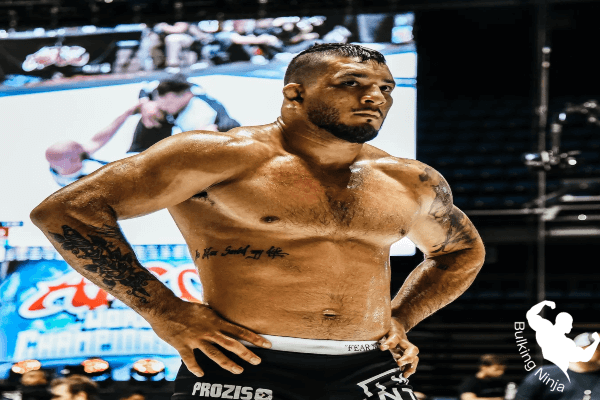
The interplay of factors like mechanical tension and metabolic stress reveals intriguing insights into the potential for muscle growth. BJJ, renowned for its dynamic techniques and demanding positions, introduces a unique stimulus that can contribute to muscle development.
While the mechanical tension arising from grappling engages muscles across the body, the metabolic stress resulting from prolonged sessions builds a foundation for muscle gains. Lets Start your fitness journey with different ways to gain muscle without weights lifting.
The requirements for muscle growth, including high forces, full range of motion, and varied loads, find a place within the challenges of BJJ. Repetitive contractions during exercises and the accumulation of metabolic by-products create an environment that aligns with the mechanisms of muscle growth. Read more about can you gain strength with only Burpees.
Even in the isometric contraction scenarios, such as holding a closed guard or a firm grip on the Gi, a distinct stimulus emerges. While BJJ might not solely focus on muscle-building like traditional weight training, its blend of elements, from resistance to energy production, contributes to a holistic approach to strength and muscle development.
The art’s unique mix of mechanics and metabolic demands showcases that within the context of BJJ, the quest for muscle growth can be an achievable and dynamic journey. Read more study about Oats are best for grow muscles .
Will BJJ Make You Stronger?
Unlocking Unique Strength
The realm of Brazilian Jiu Jitsu (BJJ) transcends traditional muscle-building methods, offering an avenue to achieve gains that extend beyond sheer size. As practitioners delve into the intricate world of grappling, they discover a form of strength that is not solely tied to weights. Through years of BJJ dedication and honing techniques, one can develop a bone-crushing grip that is a testament to the sport’s impact on muscle development.
The Art of Controlled Force
BJJ introduces a distinctive dimension of muscle gain by focusing on controlled force. The grip, an essential aspect of BJJ, reflects the dynamic interplay of strength and technique. Holding opponents in a closed guard or executing well-placed chokes and grips engages muscle groups that might not be targeted through conventional lifting. This specific BJJ strength doesn’t just build muscle; it refines one’s ability to manipulate force with precision.
Functional Strength in Action
Muscle gain in BJJ isn’t confined to isolated exercises; it’s about functional strength in real combat scenarios. The inner thighs find purpose in maintaining guard positions, while chokes and various grips engage the biceps with a purpose unique to BJJ. This strength is tailored for the practical demands of grappling, bridging the gap between muscle gain and skill application.
Synergy of Muscle and Mastery
The journey of muscle gain within BJJ embodies a fusion of physicality and mastery. The act of holding people in strategic positions within a closed guard or deploying grips showcases the dynamic interplay between muscle activation and technique execution. This synergy is fueled by years of BJJ experience and honing a bone-crushing grip that reflects dedication to the art.
Empowering the Complete Fighter
In BJJ, muscle gain isn’t an isolated pursuit; it’s a facet of becoming a complete fighter. The strength cultivated through years of grappling enhances agility, endurance, and resilience. The multifaceted gains achieved on the mat translate into a stronger, more capable version of oneself both within and beyond the realm of BJJ.
Embracing Muscle Gain through BJJ Mastery
BJJ’s influence on muscle gain goes beyond physical transformation. It’s a journey that intertwines technique refinement and strength enhancement, creating a harmonious synergy that elevates both skill and physique. Through years of BJJ dedication and harnessing the bone-crushing grip, practitioners not only become adept grapplers but also sculpt stronger versions of themselves, embodying the dynamic fusion of muscle and martial mastery.
Is BJJ Good For Building Muscle?
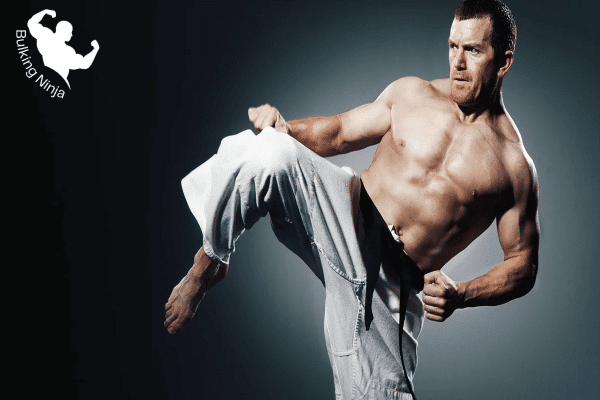
Brazilian Jiu Jitsu (BJJ) is a martial art and sport that involves grappling, ground fighting, and submission techniques. While BJJ may not be the primary focus for building muscle in the same way as traditional weightlifting, it still provides opportunities for muscle development due to the nature of its movements and techniques.
In BJJ, practitioners engage in various movements that require the activation of different muscle groups. For example, gripping an opponent’s gi (uniform) or holding them in certain positions engages muscles in the hands, forearms, and upper body. Maneuvering your body during ground exchanges activates the core, hips, and legs. The process of controlling an opponent or applying submission holds demands strength from specific muscle groups.
Although BJJ does not solely target muscle gain as its main objective, the consistent and dynamic nature of the sport can lead to gradual muscle development over time. The functional strength built through BJJ is specific to the demands of grappling and combat scenarios. This type of strength is not limited to isolated muscle movements; instead, it involves engaging multiple muscle groups simultaneously for effective technique execution and control.
While BJJ may not replace traditional weightlifting for muscle building, it offers a unique approach to developing functional strength and muscle activation through its techniques and movements. Practicing BJJ can lead to increased muscle engagement, particularly in areas relevant to grappling and submission, ultimately contributing to improved overall physicality and muscle development. Read more about how much Protein is Required for gaining muscles.
What are the Health Benefits of BJJ?
Brazilian Jiu-Jitsu (BJJ) is a martial art and combat sport that offers a wide range of health benefits. Here are some of the key health benefits associated with practicing BJJ:
-
Physical Fitness
- Cardiovascular Health: BJJ involves intense bouts of rolling (sparring) and drilling techniques, which can significantly elevate your heart rate and improve cardiovascular endurance. Regular training can lead to better circulation, reduced blood pressure, and a lower risk of heart disease.
- Strength and Conditioning: BJJ training engages various muscle groups, including the core, legs, arms, and back. This results in increased strength and muscular endurance. Moves like sweeps, takedowns, and submissions often require substantial physical effort, contributing to overall fitness.
- Flexibility: BJJ necessitates a wide range of motion, including stretching, bending, and twisting. This improves flexibility and joint mobility over time, which can be especially beneficial for individuals with sedentary lifestyles.
-
Weight Management
- BJJ burns a significant number of calories, making it an effective tool for weight management. Regular training can help with weight loss and maintaining a healthy body composition.
-
Stress Reduction
- Physical activity, including BJJ, triggers the release of endorphins, which are natural mood enhancers. Engaging in BJJ can help alleviate stress, reduce anxiety, and enhance overall mental well-being.
-
Self-Defense Skills
- BJJ is a martial art that focuses on ground fighting and submissions. Learning practical self-defense techniques can boost your self-confidence and provide you with valuable skills for personal safety.
-
Improved Balance and Coordination
- BJJ practitioners develop better balance and coordination through drills, sweeps, escapes, and maintaining positional control during sparring sessions.
-
Mental Benefits
- Strategy and Problem-Solving: BJJ is often likened to physical chess. Practitioners need to strategize, adapt to their opponent’s movements, and solve problems on the mat. This mental engagement can enhance cognitive abilities and critical thinking skills.
- Discipline: Regular BJJ training requires discipline and dedication. Learning and mastering techniques, attending classes consistently, and setting goals can instill discipline that spills over into other aspects of life.
-
Social Interaction
- BJJ dojos (training facilities) often foster a sense of community and camaraderie. Training partners and instructors become part of a supportive network, contributing to improved social interactions and a sense of belonging.
-
Increased Discipline
- Consistent BJJ training demands a high level of discipline. This can lead to better time management skills as you balance training with other responsibilities in your life. Setting and achieving goals in BJJ can also translate to success in other areas.
-
Injury Prevention and Rehabilitation
- Proper technique and conditioning in BJJ can help strengthen muscles and joints, reducing the risk of injury during training. It can also be used as a form of physical therapy or rehabilitation for certain injuries, as controlled movements can aid in recovery.
-
Improved Confidence
- As you progress in BJJ and successfully execute techniques during sparring, your confidence can soar. Overcoming challenges on the mat can boost your self-esteem and transfer to increased confidence in your daily life.
In summary, Brazilian Jiu-Jitsu offers a holistic approach to physical and mental well-being. However, it’s crucial to approach training with the right mindset, prioritize safety, and train under the guidance of experienced instructors to fully realize these health benefits while minimizing the risk of injury.
Frequently Asked Question
Can you lift and do BJJ?
Yes, it’s possible to combine weightlifting and Brazilian Jiu Jitsu (BJJ). However, balancing both activities requires careful planning to avoid overtraining and to ensure sufficient recovery for optimal performance in both areas.
Can you bulk with BJJ?
Yes, you can gain muscle mass through BJJ, but it’s not as effective as traditional weightlifting for bulking.
Does gym help BJJ?
Yes, training in the gym can complement your performance in Brazilian Jiu Jitsu by enhancing overall strength, conditioning, and muscle development.
What muscles do you strengthen for BJJ?
Brazilian Jiu Jitsu (BJJ) primarily strengthens muscles in the core, hips, legs, shoulders, forearms, and grip due to the dynamic and grappling-intensive nature of the sport.
Is it good to be strong in BJJ?
Yes, being strong in Brazilian Jiu Jitsu (BJJ) can be advantageous as it complements technique and enhances your ability to control positions, apply submissions, and defend effectively.
Is BJJ more cardio or strength?
Brazilian Jiu Jitsu (BJJ) is a combination of both cardio and strength training. It involves aerobic endurance due to the continuous movement and grappling, as well as strength from controlling opponents and executing techniques.
Is 2 times a week enough for BJJ?
Training BJJ twice a week can be a good starting point, but more frequent training can lead to better progress and skill development over time.
Will BJJ get me shredded?
Brazilian Jiu Jitsu (BJJ) can contribute to a leaner and more toned physique due to its cardiovascular nature and muscle engagement. However, achieving a shredded appearance also depends on factors like diet, genetics, and other forms of exercise.
Does brazilian jiu jitsu build muscle
Yes, Brazilian Jiu-Jitsu can help build muscle, especially in the core, arms, and legs, due to its focus on grappling and ground fighting techniques that require significant strength and endurance. However, it primarily focuses on technique and skill development, so supplementing it with specific strength training may be necessary for significant muscle growth.
Does jiu jitsu build muscle?
Yes, Brazilian Jiu-Jitsu can contribute to muscle development, particularly in the core, arms, and legs, as it involves grappling and ground fighting that engage various muscle groups. However, the primary focus of Jiu-Jitsu is on technique and skill development, so it may not lead to significant muscle gain on its own. Supplementing it with targeted strength training can enhance muscle development.
What muscles does bjj work?
BJJ primarily works the core, upper body (arms and shoulders), and lower body (legs and hips) muscles.
Conclusion
In the realm of muscle gain, Brazilian Jiu Jitsu (BJJ) presents an intriguing avenue that transcends conventional fitness approaches. The journey to building muscle through BJJ intertwines the art’s technical mastery with the refinement of physical strength.
From the bone-crushing grip developed over years of dedicated practice to the specific strength forged through grappling dynamics, BJJ delivers a holistic approach to muscle development. While BJJ may not solely aim for traditional bulking, its unique blend of technique, agility, and controlled force yields a physique that’s both functional and formidable.
As practitioners step onto the mat, they embark on a transformative path that not only enriches their muscle growth but also shapes them into stronger, more versatile individuals who embody the art’s essence in both body and spirit.
